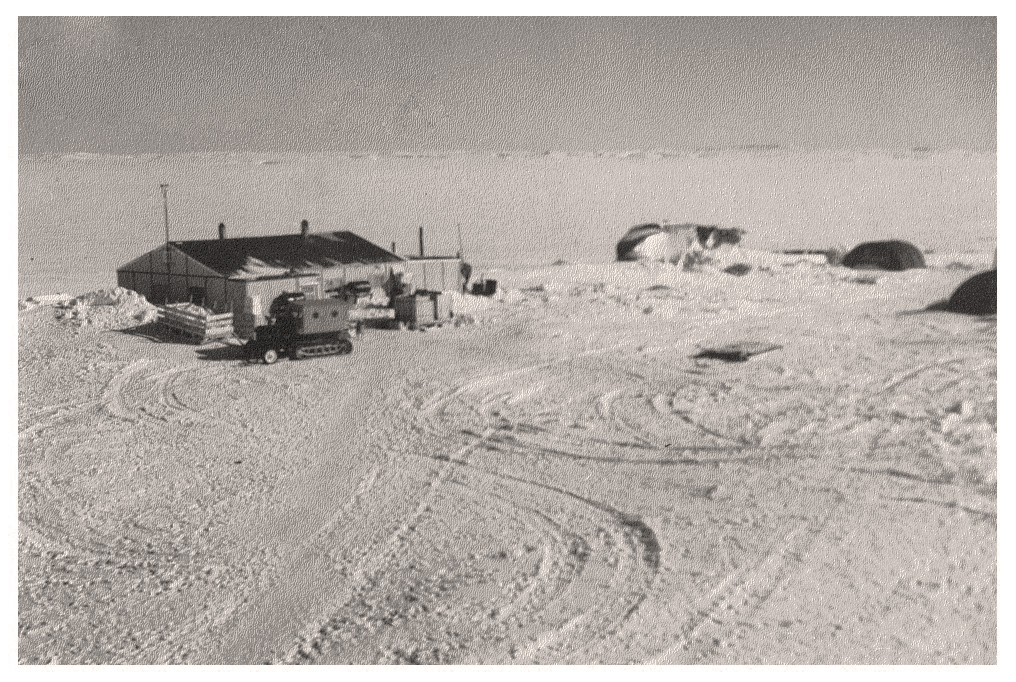
Each station collects its upper-air data primarily from hydrogen-gas weather balloons, which are launched every 12 hours with an attached radiosonde instrument that transmits temperature, pressure and humidity information through a cross-section of the lower 30 km of atmosphere; the radiosonde is electronically tracked to determine wind velocity and direction as the instrument rises aloft. The importance of this data has increased because of the need for extended weather forecasting, concern about the long-range transport of pollutants and issues of climate change and global warming.
In addition, hourly and synoptic surface weather observations, along with solar and terrestrial radiation levels, are recorded. Ice thickness, freeze-up/break-up data and snow depth measurements are taken biweekly nearly year-round. Other scientific activities include seismic and magnetic recordings, air quality measurements and aerosol monitoring, tidal gauge, and integrated environmental monitoring related to hydrology, vegetation, wildlife and soil movements. The stations also act as sovereignty outposts (see arctic sovereignty). Airfields are maintained for resupply of the stations and research camps and to provide emergency landing strips for transpolar flights. The stations have greatly increased our knowledge of our planet's atmosphere circulation and have thus extended the period of reliability of weather forecasts.
Eureka Weather Station

Eureka Weather Station, Ellesmere Island, was established 7 April 1947 by a small force of Canadians and Americans staging from Thule, Greenland, who landed on the sea ice of Slidre Fiord. Since 1947 the Canadian officer-in-charge has been appointed ex-officio customs and excise officer, immigration officer, game officer and postmaster. (Philatelists around the world enjoy the unique stamp cachets from these remote High Arctic post offices.) The station became a solely Canadian operation when the Americans withdrew on 2 July 1972. Eureka is the last staging point for many adventurers travelling to the North pole each spring.
In 1993, the Arctic Stratospheric Observatory (ASTRO) began operations on a mountain ridge 15 km west of Eureka. The $3 million building has three laboratories and involves researchers and scientists from Canada and other countries. ASTRO has two very expensive and powerful light detection and ranging laser systems (LIDARs) to investigate ozone destruction by man-made chemicals in the Arctic atmosphere in the winter night and polar spring. Special sophisticated optical instruments are used to study auroral phenomena in the mesosphere - too high for radiosonde weather balloons and too low for satellites (see Northern Lights). Microwave radiometry and spectroscopy of light from the moon, stars and sun are also being studied.
Resolute Weather Station
Resolute Weather Station, Cornwallis Island, was established on 31 August 1947. An airfield was constructed by the US air force and army engineers, and two years later the RCAF developed an air base and maintained facilities. Operations were transferred to Transport Canada on 1 April 1964 and to the NWT government on 1 April 1995. The last Americans at the HAWS withdrew from Resolute on 27 August 1972. An ozone measuring and monitoring program commenced in 1957 and continues with computerized equipment
Isachsen Weather Station
Isachsen Weather Station, Ellef Ringnes Island. The first three station personnel were flown in to Isachsen from Resolute with US air support on 3 April 1948. The Americans withdrew 31 October 1971, and budgetary restraints and reductions caused the decommissioning of Isachsen 19 September 1978. An automatic weather station installed in 1989 is routinely interrogated by satellite.
Mould Bay Weather Station
Mould Bay Weather Station, Prince Patrick Island. The initial landing was made by US air support on 11 April 1948 with three station personnel and basic supplies. The airlift was staged from Resolute. The Americans withdrew 2 November 1971. This station is the loneliest outpost and can only be resupplied by air, since severe sea ice conditions prevent icebreakers from reaching Mould Bay. The station's staff was reduced from ten to four in 1993. Building refurbishment, reduced power consumption and an automated weather station have helped to maintain the station against closure.
Alert Weather Station
Alert Weather Station, Ellesmere Island. The initial landing by Canadian and US air forces took place 9 April 1950 from Thule, Greenland, although some supplies such as fuel, emergency rations, temporary shelters and a small tractor were left on Cape Belknap in August 1948 by the USS Edisto icebreaker. The greatest single calamity in developing the HAWS occurred on 31 July 1950 at Alert during a low-level paradrop mission, when parachute ropes entangled the tail section ailerons of the RCAF Lancaster, causing it to crash beside the weather station. The seven Canadian aircrew and two civilian passengers died.
The Americans withdrew on 31 October 1970. The aerodrome was transferred to the military in 1973 and in 1978 Environment Canada decommissioned many of its buildings, reduced its staff to 4 and moved to Canadian Forces Station Alert.
In 1986, Canada's first Background Air Pollution Monitoring Laboratory was inaugurated 8 km south of Alert and become the most northerly permanent research station in the world. Major construction in 1992 made room for the Background Air Chemistry Observatory (BACO). This facility permits scientists from Environment Canada to track changes in the chemical (carbon dioxide, Arctic haze, trace organic contaminants, aerosols and greenhouse gases) and the physical composition of the circumpolar atmosphere over several decades, as this composition has a potential impact on world climate and Arctic ecosystems. Ozone observations are also conducted at Alert, Eureka and Resolute to help resolve the problem of the breakdown of the polar vortex and the discontinuity of ozone levels in the Arctic atmosphere.

 Share on Facebook
Share on Facebook Share on X
Share on X Share by Email
Share by Email Share on Google Classroom
Share on Google Classroom





